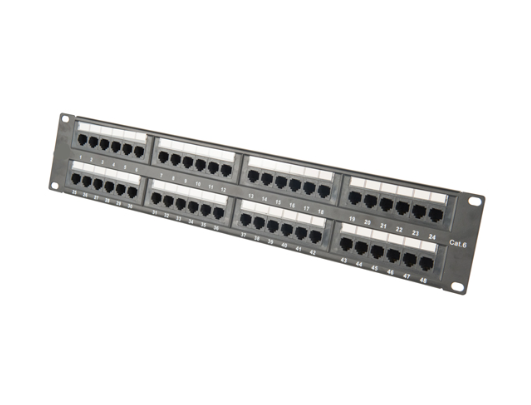News
Site Editor
 Site
https://leonetworkgroup.usa18.wondercdn.com/uploads/image/5fe152faa587d.png
Making a Cat6 Patch CableCat6 patch cables are commonly used in network installations to connect devices like computers, routers, servers, and switches to a network. These cables are preferred due to their improved performance and faster data transmission speeds. To make your own Cat6 patch cable, you will need a few basic supplies and tools. Here's how to create your own Cat6 patch cable:Supplies
Site
https://leonetworkgroup.usa18.wondercdn.com/uploads/image/5fe152faa587d.png
Making a Cat6 Patch CableCat6 patch cables are commonly used in network installations to connect devices like computers, routers, servers, and switches to a network. These cables are preferred due to their improved performance and faster data transmission speeds. To make your own Cat6 patch cable, you will need a few basic supplies and tools. Here's how to create your own Cat6 patch cable:Supplies
How To Make A Cat6 Patch Cable
Views: 415
Author: Site Editor
Publish Time: 2023-07-13
Origin: Site
Making a Cat6 Patch Cable
Cat6 patch cables are commonly used in network installations to connect devices like computers, routers, servers, and switches to a network. These cables are preferred due to their improved performance and faster data transmission speeds. To make your own Cat6 patch cable, you will need a few basic supplies and tools. Here's how to create your own Cat6 patch cable:
Supplies and Tools
- Cat6 cable (per desired length)
- RJ45 connectors (2 per cable)
- Cable cutter or scissors
- Cable stripper
- Crimping tool
- Wire stripper
- Designated wire map
Step 1: Measure and Cut the Cat6 Cable
The first step is to measure and cut the Cat6 cable according to the required length. Ensure that you have enough Cat6 to run between your devices. The maximum distance that a Cat6 cable can travel is around 100 meters.
Using a cable cutter or scissors, cut the cable cleanly. To ensure a clean cut, make sure you use the correct tool for the job. Damaging the cable can impact data transmission.
Step 2: Strip the Cat6 Cable
After you have cut the cable to the desired length, strip off 1 inch of the insulation from both ends of the cable. You can use a cable stripper or a wire stripper for this task.
Be careful not to damage the inner wires while stripping off the outer insulation.
Step 3: Untangle the Wires
After removing the outer insulation, untangle the wires of the Cat6 cable. Make sure that they are not knotted, and that each wire is distinct.
Step 4: Arrange the Wires
Arrange the wires according to the specified wire map. Different wire maps are used depending on the installation requirements such as T568A or T568B. You can choose from your designated wire map as required.
Make sure that the wires are arranged in the correct order, and that they are not kinked or bent.
Step 5: Insert the Wires into the RJ45 Connectors
Insert the wires into the RJ45 connectors in the correct order with the correct color code. When you insert the wires into the connectors, be careful not to damage the wires or bend them out of shape.
Step 6: Crimp the RJ45 Connectors
Using a crimping tool, crimp the RJ45 connectors to complete the Cat6 patch cables. Make sure that you do not over-crimp or under-crimp, as this can lead to a poor connection.
Step 7: Test the Cable
Use a cable tester to test the Cat6 patch cable to make sure that it is working correctly. If you find that there is a problem, recheck the connections of the wires, and re-crimp if necessary.
Making your own Cat6 patch cable is a straightforward task. With a few basic supplies and the right tools, you can create a Cat6 patch cable that will allow you to connect your devices to a network quickly and efficiently. Remember to follow the steps carefully in order to create a reliable and high-performing Cat6 patch cable.
If you want to know more about industrial network cabinet,china fiber optic splice closure,china fiber optic distribution box,please consult the fiber optic splice closure factory









